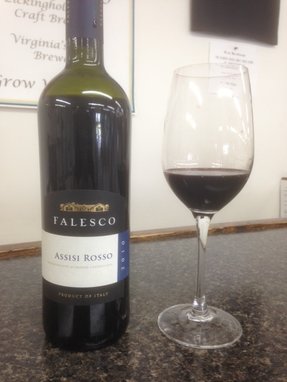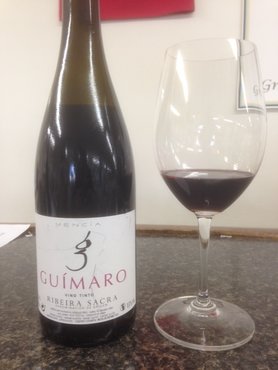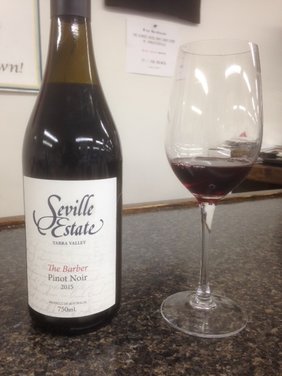 One of our first looks at the 2015 vintage in Burgundy, a year of high potential quality but still fraught with pitfalls, especially those looking for relative values. The good news is that after several straight years of battling wildly inconsistent weather that brought cooling rains and warming trends at exactly the wrong time and several of the worst hailstorms in decades, 2015 was relatively positive all the way through. Most wineries were able to make the wines they WANTED to make, not just deal with what they HAD to make. Unfortunately, the years of weather issues before did have cumulative effects on the vines that limited the number of grape clusters, and overall the volume produced was lower than usual. Sadly, 2016 is looking to be a borderline disaster with massive frost and mildew damage in the Spring, so most wineries may be forced to raise prices on 2015 wines in case they have little worth selling next year. Long story short, when you find an actual value like this from a 2015 Burgundy, grab onto it with both hands. Our first time with this producer, brought in by one of our favorite local importers, with fruit sourced primarily from smaller sites at the southern end of the Cote de Beaune, one of the few places where values still exist. Only 500 cases were made of this little beauty from vines around 50 years of age that see the same treatment as their Pommard and Santenay wines, but just a shorter time in mostly new barrels to allow more of the fruit to show through. Surprisingly deep color in the glass and loads of elegant dark cherry aromas on the nose with hints of more tart red fruit in the background, this already starts with more intensity than most of what has come through Burgundy over the last few years. Lots of plummy dark fruit continues on the palate, but good acidity brings out the complimentary tart cranberry tones through the finish. Perhaps a bit straightforward, but not lacking for flavor and impact which has been hard to find over the past few vintages, this is definitely a producer to get behind.
0 Comments
 The pastoral scenery of Umbria are steeped with history and beauty known the world over. To most, the wines here are very much secondary; they are solid, and when you are there visiting they are enjoyed, but rarely are they sought after or as distinctive in the way those from Tuscany or other surrounding regions. Assisi has been known for centuries as the birthplace of Saint Francis and the Seraphic Order, so to be home to one of the patron saints of Italy is a significant deal. The wines from the Assisi DOC, however, are far less notorious. If anything the modern wine movement has been of great benefit to Assisi and the Umbrian region as it has allowed them to experiment and implement other grapes and methodology more freely than some of the more staid and 'traditional' regions. you see more blending of Bordeaux grapes here with the native Sangiovese, and producers like Falesco have been able to create a higher quality of wines than ever before that also have a distinctly different personality than those around them. Predominantly Sangiovese with the remaining 30% divided between Merlot and Cabernet Sauvignon, the color is noticeably deeper than your typical Chianti but still has that dusty dried earth character on the nose that Italian Sangiovese traditionally carries. The palate has a lot of dark dried cherry and savory herb tones, and the bit of extra time in the bottle has provided some impressively polished and silky tannins. While it isn't hefty the weight definitely shows the Bordeaux grape influence, putting a little bit extra meat on its bones when compared to what's usually found in this price range. A step up from a usual 'pizza wine' (would usually go with something a bit juicier anyway) but the maturity definitely gives this the potential to pair with nicer quality red meat dishes or roasted vegetables.  A new vintage for one of our favorite new finds in Spain last year, and it may even be better than before. The Mencia grape is prevalent in the region between Old Castile and the Galician provinces, or 'Green Spain', where the terrain is much hillier and cooler. The grape itself is far different than Tempranillo, at one time actually believed to be a genetic predecessor of Cabernet Franc and taken to Bordeaux during Roman expansion. Tests have proved otherwise, but wines like this make it very easy to understand how that connection could have been made. Guimaro and winemaker Pedro Rodriguez take a more neutral, minimalist to their winemaking, and the resulting wine drinks much more like the reds from the Loire than they do from Bordeaux, trading weight and oak barrel aging for vibrancy and freshness. Dusty black cherry aromas with hints of savory herbs and soy, absolutely no signs of heat, perfectly capturing the uniquely cool and lush environment of Ribeira Sacra. On the palate the texture is medium bodied with an impressively polished mouthfeel, almost slippery with extremely fine tannins that show off the savory, gamy fruits. In comparison to the previous vintage, there is a tad more richness, bringing out some black tea and lingering cherry fruit characters through the finish, softening out more of the tartness across the finish. More substance here, but still not hanging from a heavy frame, and the comparison to some of the better Loire Cabernet Francs is even more apt. This is a much less 'in your face' style than what most people would expect from a Spanish wine, which is exactly what this wine should be because the grape and the region are unique to the rest of the Iberian Peninsula.  With the assault of large volume 'critter labels' from Australia over the years, it's easy to forget that there is more to their wine industry than Shiraz and heavily fruited wines from warm dry growing climates. It would be like saying Italian food is all about pasta and red sauces. Victoria surrounds Melbourne and is a relatively mild climate, receiving cooling influences from both the Tasman Sea and Great Australian Bight. The conditions are similar to some of the Californian coastal regions and South Africa's Cape, which are both well regarded for their production of Chardonnay and Pinot Noirs. The Yarra Valley sits just outside the city, much as Napa does with San Francisco/Oakland, and their wine industry has evolved into a tremendous travel destination as well as their 'eat local' food and farm to table scene. Their biggest problem for us East Coasters is that there are so many other sources for their style of wine between here and there; we have direct lines from Burgundy, South Africa, California, and Oregon that flood our market with all sorts of spectacular wines. This wine we are offering deserves attention at its usual mid-$20 retail price, but it was getting lost in the shuffle, so we have the chance to bring it to you for a little bit better price. OK, a LOT better price. A dusty black cherry color in the glass with lots of racy dark fruits and cola on the nose, on first look this could easily be a wine out of Carneros. On the palate the flavors are equally inspiring, with plenty of mouthfeel and super-fine tannins that barely dust up on the finish. The black fruits and cherry skins show through more than any sweeter fruits, and the relatively restrained 13.4% abv means this is not a fruit bomb that could be mistaken for Syrah; honestly, they have enough Syrah/Shiraz down there already, they don't need their Pinot masquerading as one. A very welcome, food friendly and polished wine that brings a lot of that region's character into focus. Even if you don't enjoy THIS Victorian Pinot in the future (a one time offering at this price), it should encourage more of you to explore the diversity they can provide. |
The Best of the Best.We offering free tastings on these wines in the store every Thursday and Friday, and a 10% discount off the retail price through the duration of the day. Come on by and give them a try! Archives
July 2024
Categories |
Location |
|

 RSS Feed
RSS Feed